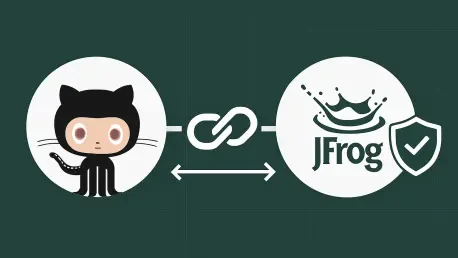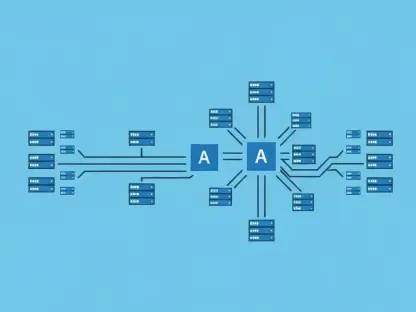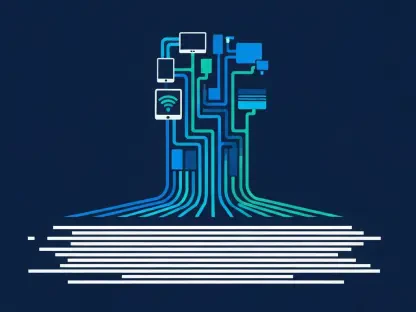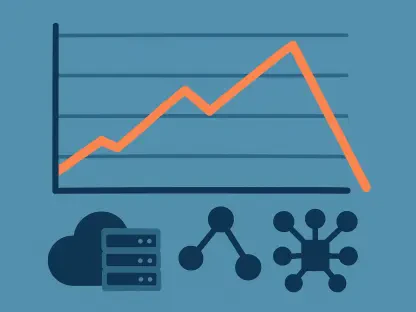In an era where software supply chain attacks are becoming increasingly sophisticated, the need for robust security and traceability in development workflows has never been more critical. Developers often grapple with fragmented tools, losing track of which commit corresponds to a specific artifact or struggling to reconcile security scan results from disparate systems. This complexity not only slows down delivery but also heightens the risk of vulnerabilities slipping through the cracks. A groundbreaking integration between two leading platforms now promises to address these challenges head-on, offering a unified solution that bridges source code and production artifacts. By streamlining processes and enhancing security, this collaboration aims to empower teams to focus on innovation rather than manual oversight. The seamless connection ensures that every step from commit to deployment is traceable and secure, setting a new standard for modern software delivery.
1. Unveiling a Game-Changing Integration
The newly announced integration between GitHub and JFrog marks a significant step forward in addressing the complexities of software development workflows. This collaboration connects source code with attested binaries through a secure, traceable process, ensuring that developers can maintain visibility across the entire lifecycle. For teams accustomed to juggling multiple tools to track commits or match them with corresponding artifacts, this solution offers a centralized platform that eliminates unnecessary switching. Beyond simplifying navigation, it consolidates security scanning efforts, removing the burden of manually reconciling results from separate systems. This unified approach saves valuable time and reduces the likelihood of errors, enabling developers to prioritize building features over managing disjointed processes. The integration is designed to fit seamlessly into existing workflows, making adoption straightforward for teams of all sizes.
Moreover, the benefits extend beyond mere convenience to tackle critical security concerns in the software supply chain. By linking every commit to its resulting artifact cryptographically, the integration ensures that no step in the process remains unverified. This traceability is vital in an environment where a single weak link can expose sensitive data to malicious actors. Additionally, automated security scans provide vulnerability attestations directly within the workflow, offering real-time insights without requiring external tools. Teams can now rely on a single source of truth for both development and security data, fostering confidence in the integrity of their builds. This partnership sets out to redefine how developers approach supply chain security, making it an integral part of the delivery pipeline rather than an afterthought.
2. Addressing Core Challenges in Software Delivery
Modern software delivery operates as a complex supply chain, where source code, build pipelines, and production artifacts form interconnected links that must remain secure and traceable. Any vulnerability in this chain can serve as an entry point for threats, compromising data and systems. Developers face mounting pressure to maintain security while managing an expanding set of responsibilities, often with tools that fail to communicate effectively. Common frustrations include losing traceability once builds leave the development platform, dealing with fragmented security scans across multiple systems, and navigating CI/CD pipelines that feel more patched together than integrated. These challenges not only hinder efficiency but also increase the risk of oversight in critical areas.
To counter these issues, the integration was developed with a clear focus on reducing friction and enhancing security through automation. By cryptographically tying commits to artifacts, it ensures full lifecycle visibility, while automated security scanning delivers contextual vulnerability insights without manual intervention. Key features include unified security scans with prioritized alerts based on production context, policy-driven artifact promotion, and the automatic association of attestations with build artifacts. The goal is to streamline workflows, minimize risk, and free up developers to focus on innovation. This solution embeds artifact publishing directly into existing actions, eliminating the need for separate processes and fostering a more cohesive development experience that addresses long-standing pain points.
3. Understanding the Workflow Mechanics
At its core, the integration links GitHub’s developer platform with JFrog’s software supply chain platform through secure authentication and build metadata, creating a seamless flow from code to production. The process begins with pushing code to a GitHub repository, followed by building and testing through GitHub Actions. Commits, builds, and artifacts are then connected to provide complete visibility across the development lifecycle. Artifacts are automatically published to JFrog Artifactory, ensuring no manual steps are required for deployment. Finally, security scans are conducted using GitHub Advanced Security for code and JFrog Xray for artifacts, delivering comprehensive vulnerability detection within a unified system. This structured approach ensures that every phase of development remains transparent and secure.
The workflow’s design prioritizes automation to eliminate inefficiencies and bolster trust in the build process. By connecting each element of the lifecycle, teams gain a clear view of how code transforms into deployable artifacts, making it easier to identify and resolve issues. Automatic publishing to Artifactory reduces the risk of human error during deployment, while integrated scanning ensures that vulnerabilities are caught early and in context. This end-to-end visibility not only enhances security but also simplifies compliance with organizational policies. Teams can confidently trace every artifact back to its source commit, ensuring accountability at every stage. This integration redefines the development pipeline by making security and traceability inherent to the process, rather than optional add-ons.
4. Step-by-Step Setup Guide
Setting up this integration starts with enabling it in JFrog Artifactory by navigating to Administration → General Management → Manage Integrations → GitHub. Toggle the “Enable GitHub Actions” option, authenticate the GitHub organization, select the appropriate token type, and create a pull request to finalize the configuration. Next, trigger a build in GitHub Actions to generate the artifact and attestation, ensuring the workflow includes actions like ‘jfrog/jfrog-setup-cli’ and ‘actions/attest-build-provenance’. An example workflow, such as “Build, Test & Attest,” can be used to automate building, testing, and attesting Docker images before pushing them to Artifactory. Post-build, the artifact lands in a staging repository for validation against trusted conditions like GitHub-signed provenance, issuer, repo, workflow, and branch. If policies pass, JFrog promotes the artifact from dev to production automatically.
Ongoing security is maintained through Dependabot, which continuously scans the source repository for dependencies and vulnerabilities, alerting administrators to critical CVEs. Production alerts can be filtered using the tag “artifact-registry:jfrog-artifactory” to focus on relevant issues. Lifecycle data from JFrog is pushed to GitHub via the artifact metadata API, ensuring production promotions are reflected for Dependabot filtering. When alerts are identified, remediation involves applying suggested dependency updates, rebuilding, and redeploying with fresh provenance. This comprehensive setup process ensures that security and traceability are embedded into every stage of development. By following these steps, teams can establish a robust pipeline that minimizes manual effort while maximizing protection against vulnerabilities and compliance risks.
5. Maximizing Value with Best Practices
To fully leverage this integration, adopting certain best practices can significantly enhance security and efficiency. First, implement OpenID Connect (OIDC) authentication to avoid using long-lived credentials in workflows, reducing the risk of credential compromise. Automate artifact promotions in Artifactory to smoothly transition builds from dev to staging to production, minimizing delays and manual errors. Establishing security gates early in the pipeline is also critical, ensuring that unattested or vulnerable builds are blocked before reaching production environments. Additionally, utilizing provenance attestations in JFrog Evidence provides instant traceability, allowing teams to quickly verify the origins and integrity of builds and artifacts throughout the lifecycle.
These practices are designed to create a fortified development environment where risks are mitigated proactively. By prioritizing OIDC, teams safeguard sensitive access points, while automated promotions streamline delivery without sacrificing control. Early security gates act as a first line of defense, catching issues before they escalate, and leveraging attestations ensures that every artifact’s history is transparent and verifiable. Together, these strategies transform the integration into a powerful tool for secure software delivery. Teams adopting these recommendations will find their workflows not only more secure but also more agile, capable of adapting to evolving threats while maintaining compliance with organizational standards.
6. Moving Forward with Enhanced Security
Looking back, the collaboration between GitHub and JFrog delivered a transformative solution that tackled persistent challenges in software supply chain security. This integration provided developers with a unified platform to trace builds from commit to production, ensuring that vulnerabilities were identified and addressed efficiently. The seamless workflow and automated processes reduced the burden of manual oversight, allowing teams to maintain focus on innovation. Reflecting on its impact, it became clear that embedding security into every stage of development was no longer optional but essential for safe delivery.
For those ready to take the next step, enabling this integration offered an immediate path to a more secure and automated software supply chain. Exploring detailed resources like the JFrog integration guide and GitHub documentation provided deeper insights into optimizing the setup. Moving forward, teams were encouraged to continuously refine their security practices, leveraging the tools and best practices outlined to stay ahead of emerging threats. This partnership laid a strong foundation for future advancements in secure development, promising even greater efficiencies down the line.









